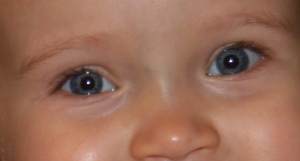
NOTEWORTHY WEDNESDAY!
I have never liked smoking from the time I was very young…many of my family members smoked and the smell just made me sick.
That was many years ago…smoking was everywhere, cars, trains, airplanes, restaurants. Seemingly, you could not go anywhere to get away from it.
I endured my early years of second hand smoke and welcomed the bans on smoking.
There is so much evidence against smoking and here is a recent post from the March of Dimes.
If you do not smoke please do not start and if you do smoke please get help to quit…it is really not good for anyone.
Smoking causes serious birth defects
To dispel any uncertainty about the serious harm caused by smoking to babies and pregnant women, the first-ever comprehensive systematic review of all studies over the past 50 years has established clearly that maternal smoking causes a range of serious birth defects including heart defects, missing/deformed limbs, clubfoot, gastrointestinal disorders, and facial disorders (for example, of the eyes and cleft lip/palate).
Smoking during pregnancy is also a risk factor for premature birth, says Dr. Michael Katz, senior Vice President for Research and Global Programs of the March of Dimes. He says the March of Dimes urges all women planning a pregnancy or who are pregnant to quit smoking now to reduce their chance of having a baby born prematurely or with a serious birth defect. Babies who survive being born prematurely and at low birthweight are at risk of other serious health problems, Dr. Katz notes, including lifelong disabilities such as cerebral palsy, intellectual disabilities and learning problems. Smoking also can make it harder to get pregnant, and increases the risk of stillbirth.
Around the world, about 250 million women use tobacco every day and this number is increasing rapidly, according to data presented at the 2009 14th World Conference on Tobacco or Health in Mumbai.
The new study, “Maternal smoking in pregnancy and birth defects: a systematic review based on 173,687 malformed cases and 11.7 million controls,” by a team led by Allan Hackshaw, Cancer Research UK & UCL Cancer Trials Centre, University College London, was published online today in Human Reproduction Update from the European Society of Human Reproduction and Embryology.
When women smoke during pregnancy, the unborn baby is exposed to dangerous chemicals like nicotine, carbon monoxide and tar, Dr. Katz says. These chemicals can deprive the baby of oxygen needed for healthy growth and development.
During pregnancy, smoking can cause problems for a woman’s own health, including: ectopic pregnancy; vaginal bleeding; placental abruption, in which the placenta peels away, partially or almost completely, from the uterine wall before delivery; placenta previa, a low-lying placenta that covers part or all of the opening of the uterus.
Smoking is also known to cause cancer, heart disease, stroke, gum disease and eye diseases that can lead to blindness.
Tags: birth defects, ectopic pregnancy, placenta abruption, placenta previa, Pregnancy, premature birth, smoking
This entry was posted on Tuesday, July 12th, 2011 at 10:41 am and is filed under Hot Topics, Planning for Baby, Pregnancy. You can follow any responses to this entry through the RSS 2.0 feed. You can leave a response, or trackback from your own site.
via News Moms Need » Blog Archive » Smoking causes serious birth defects.





